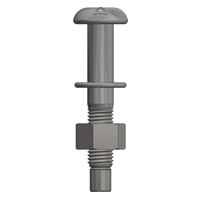Choices for the Smart tension Control belt
November 30, 2019

To avoid major inconvenience and expense, periodic annual maintenance is recommended an inspection, minor repairs, component replacement, leak repair, etc. in order to identify any failures that could lead to more serious problems in the future. A visit to https://roigroup.quickbase.com/db/ happens to be the best deal there. These are the maintenance we will talk about below:
Preventive
As its name implies, preventive maintenance is performed even when there is no apparent damage to the project. It serves to investigate possible faults in the hydraulic system and correct them before they get worse. According to the rules of the Association of Technical Standards, preventive maintenance serves to locate and repair any and all problems that cannot be overlooked in a facility, at the risk of causing accidents. Therefore, the idea is that it should be held annually.
Predictive
This type of maintenance has been in demand and is related to home automation projects. It is a compilation of actions that control the residence’s facilities through technological tools in order to predict probable system errors. This ensures the maximum efficiency of the installation and the minimum degree of operational failure.
Corrective
Corrective maintenance service consists of repairing or repairing components that have worn out over time. This type of maintenance may also be necessary in case of any unforeseen events that may have compromised any component of the hydraulic system.
Hydraulic System Material Types
The choice of materials for residential plumbing requires a lot of attention and some specific criteria. To give you an idea, each part of the hydraulic project needs different piping: the shower asks for a specific type of pipe, while the toilet demands another, as does the kitchen sink, and so on.
Therefore, you need to be very attentive at the time of purchase. In addition, the quality of each material should also be prioritized, considering the cost-effectiveness of the facilities. After all, it is no use buying inferior materials and suffering from leaks later, do you agree?
As for the exact size of the pipes, consider this basic residential plumbing system: you will need two pipes of different sizes one for the flush toilet, 1 and ½ inch in diameter; and another for the rest of the house, ¾ inches in diameter. At the end of each ¾ inch pipe, a ½ inch tap reducer should be installed.
Who builds the hydraulic part?
After the planning phase of the hydraulic plant, the time has come to complete the work. At that moment comes the hydraulic firefighter, also known as a plumber. The role of this professional basically contemplates two main moments: the first one is that of passing the pipes, leaving the opening points on the floor and the wall. After that, the plumber interrupts the service so that the bricklayer installs some finishes such as floors and tiles or until the painter comes into action.

Once finished, then the plumber returns to perform the second moment of his job: install the toilets, sinks, sinks, taps, and mixers, among other parts of the project in question. It is essential to respect this stage of finishing to only then install the dishes. Otherwise, you are at serious risk of masons or painters damaging the pieces while painting or laying floors and tiles. After all, it is really hard to work on the finishes if the hydraulic dishes have already been installed.
